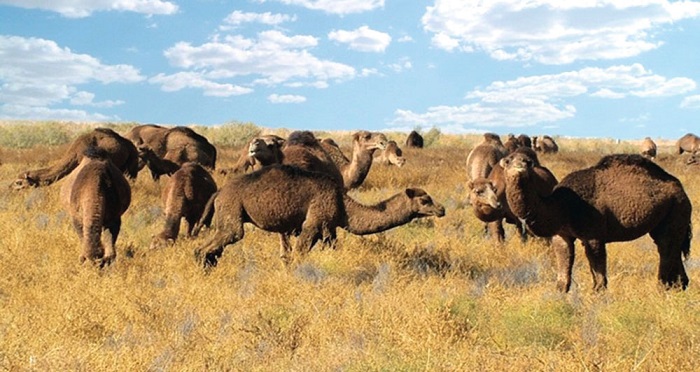Animal husbandry is a key branch of the agricultural complex of Turkmenistan. Currently, Turkmenistan has a wide livestock production base that meets the needs of the population and various sectors of the national economy, including the food and light industries.
To further enhance this vital sector, a strong scientific foundation is crucial. In this regard, the S.A. Niyazov Turkmen Agricultural University plays a pivotal role, operating a dedicated Scientific and Production Center for Animal Husbandry and Veterinary Medicine.
In an interview with the newspaper “Neutral Turkmenistan,” Guvanch Agamyradov, Director of the Center, provided insights into the ongoing development of Turkmenistan’s livestock complex. Here are summarized points from the interview:
Scientific research activities
The Scientific and Production Center of Animal Husbandry and Veterinary Medicine plays an important role in the development of the industry. The main task of the center is to provide the livestock complex with a powerful research base. The Center addresses topical issues in the field of animal husbandry and veterinary medicine, as well as promotes the introduction of advanced technologies.
The main areas of research include:
• Search for solutions in the field of providing the country with high-quality animal products
• Improving the methodology for protecting animals from infectious and non-communicable diseases
• Study of ways to increase productivity of animals and birds.
• Conservation and improvement of the gene pool of farm animals
• Breeding of new highly productive breeds
• Testing of new technologies
• Study of the most dangerous diseases for animals and methods of their prevention
The main types of animal husbandry
Taking into account the local climate and the fodder base, the main directions of livestock development in Turkmenistan includes cattle breeding, sheep breeding, poultry farming, camel breeding.
Sheep farming
Turkmenistan is home to two well-known sheep breeds: the Sarja and the Karakul. The Center’s researchers have made significant contributions, developing five breeding types of Karakul sheep and a highly productive strain of the Aşgabat breed of Sarja sheep. Notably, the Sarja sheep breed, renowned for its fine white wool, has a long history in Turkmenistan, having been developed through traditional, time-honored breeding practices. The wool from these sheep is used in the production of Turkmen carpets.
Camel breeding
There is one camel breed in the country, the arvana, which is well adapted to the local climate. The scientists of the center have bred the Sakarçäge breed group.
Cattle breeding
In the field of cattle breeding, scientists cross local cow species with zebu bulls to produce highly productive hybrids.
Poultry farming
Poultry farming is the youngest and most commercialized branch of animal husbandry. Private enterprises are engaged in the sale of hatching eggs from Lohmann chickens.
Veterinary work
Turkmen veterinary scientists are working to prevent dangerous diseases such as brucellosis. Vaccines and medicines for detecting brucellosis have been developed, which have been tested and patented. These bio-products are distributed among country’s livestock farms.
Prospects for the development of the Scientific and Production Center of Animal Husbandry and Veterinary Medicine
The priority areas of the Center’s activities are:
• Further improvement of the quality of farm animals and birds
• Increasing their productivity by breeding methods
• Creation of new breed groups
• Ensuring the ecological purity of products
• Creation of veterinary medicines from local raw materials, including medicinal plants
• Development of biological means for animal and human health protection
Government support
Guvanch Agamyradov emphasized that the government actively supports livestock enterprises through various initiatives. These include preferential loan programs, the allocation of land and water resources, and the fostering of a private sector presence in the market. The country is witnessing the establishment of numerous modern livestock and poultry complexes, equipped with cutting-edge technologies. The development of the industry is not limited to the creation of production infrastructure, but is also aimed at the introduction of world best practices. ///nCa, 24 January 2025
